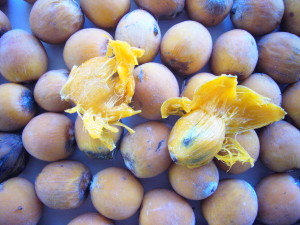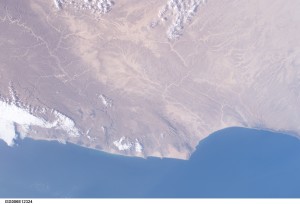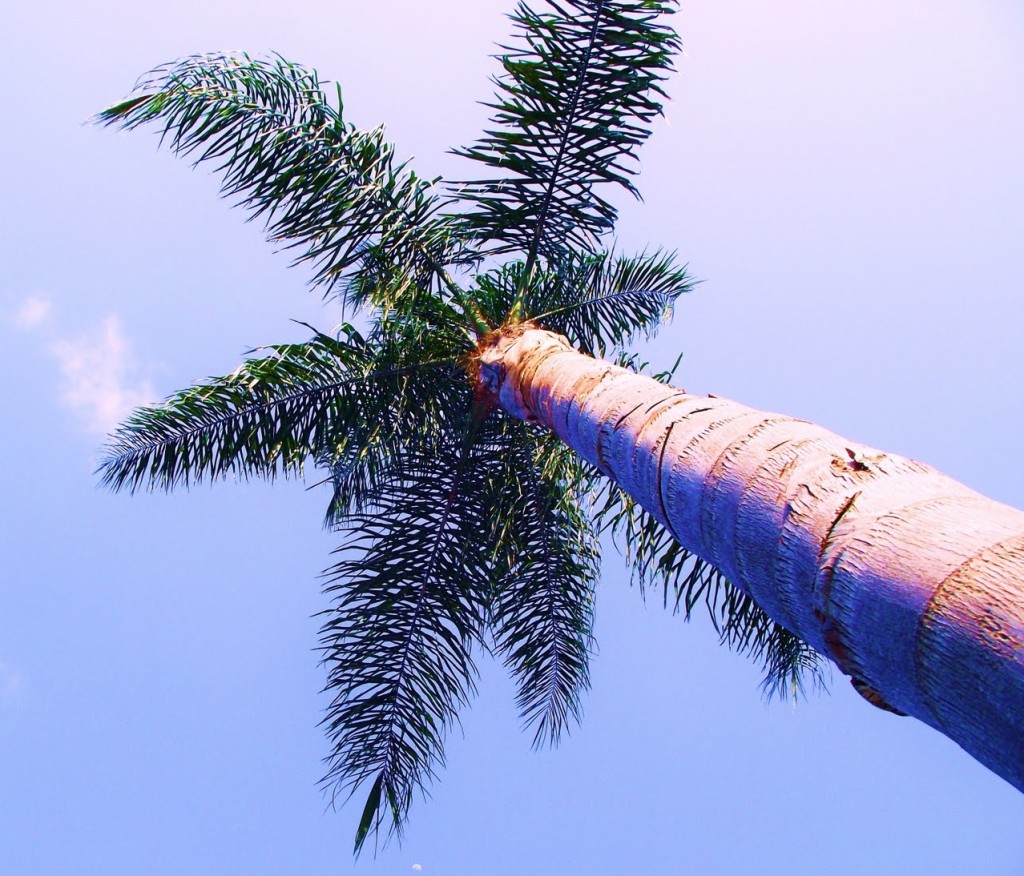
A forager’s typical view of a Queen Palm, photo by a White Washed Cottage
The Queen Palm and I got off on the wrong frond. Before I met one I had read it was toxic. There are a few toxic palms but the Queen Palm is not one of them.
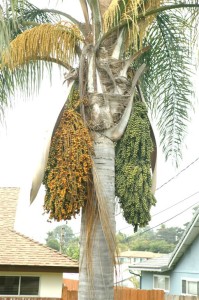
Fruit branches can be up to six feet long, photo by Hawaiian Dermatology
A rain forest native of Brazil, Paraguay and northern Argentina, Queen Palms, Syagrus Romanzoffiana, are more a landscaper’s delight than a forager’s. The palm is tall, stately, single-trunked with a crown of glossy, bright green, soft feather-like fonds. It forms a graceful, drooping 20-foot crown with bright orange fruit (dates) that favor ripening in the winter months but can be found at other times as well. They are popular adornments along streets or walkways usually planted every 15 feet. Their gray trunks are attractively ringed with dropped leaf scars. From Florida to California it is the most commonly planted palm. It’s also common in northern Australia and they’re easy to grow in pots indoors if you live in cooler areas.
The elements that make it a choice palm for landscaping makes it a headache for foragers. Unlike the much shorter and also edible Pindo Palm, the Queen Palm is usually too tall to harvest the dates easily. One is left to picking them up off the ground where they can develop a white mold. Aromatic and sweet the dates are sticky and fibrous with a very large seed. Usually you don’t eat the date meat but you can. One just chews on the pulpy coating getting the sugar off of it then spit out the fiber out. However, some people like to eat the fiber as well but it can cause a tummy ache in some people. Besides being loaded with simple carbohydrates the date has antioxidant qualities almost on par with vitamin C, according to a 2012 study.
From a landscaping point of view the palm while desirable is also a lot of work. They are not “self-cleaning” so the older fronds have to be removed (at just the right time or the palm suffers.) Also for many gardeners who turn a plot of land into a living painting a messy pile of orange dates is a visual blight on a highly coiffeured landscape. Thus the striking seed spikes are often cut off before the fruit gets a chance to ripen and drop.
The Queen Palm’s scientific name is a bit of a hodge-podge. When I first moved to Florida the palm was Cocos plumosa. Then it became a mouthful: Arecastrum romanzoffianum. Now it is the tongue twisting Syagrus Romanzoffiana (sigh-AY-gruss roe-man-zoff-ee-AY-nuh or see-A-grus ro-man-zof-fee-A-na) Though those and at least a half-a-dozen other names most people just called it the Queen Palm (or occasionally the Giriba palm.)
Syagrus (SEE-ah-grus) was a Greek poet who commented about Troy before Homer. Copycat references say the genus was named after the poet. That is Internet nonsense. On the Arabian seacoast there is a point called the Cape of Fartak, now in eastern Yeman, which is in the part of the world where dates were first cultivated and still grown. The ancient Greeks called it Cape Syagrus named after the σύαγρος (SEE-ah-gros) date. Greeks often named an area after what grew there. We also know the Roman author Pliny the Elder also referenced a Syagrus date. The genus is clearly named for the date not the poet.
Romanzoffiana is more obtuse. It honors Count Nikolai Petrovich Rumyantsev (1754-1826) which after going through the Dead Latin filter becomes Romanzoffiana. Who was he? Apparently a count you could not count on. Rumyantsev was a foreign minister to Alexander I of Russia. He sought closer ties between Russia and France in the early 1800s. Rumyantsev also, understandably, suffered a stroke when he heard that Napoleon had invaded Russia. Ooopse, slight miscalculation there. As a result of the stroke Rumyantsev lost his hearing and by then his career was in ruins. So why is a palm named after him? In private life Rumyantsev was a bit of a historian, collector of odds and ends, and patron of exploration voyages including the first Russian navigation around the globe. In short, he bought the honor. Nearly 200 years after his death all that remains of him is a painting and a palm.
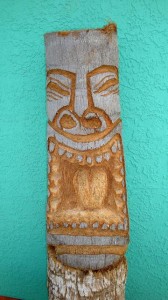
A Tiki made from a Queen Palm trunk. Photo by Tiki Room.
Curiously the University of Florida refers to the Queen Palm date as “ornamental” and classifies the palm as a category II invasive species. In Australia the palm is a threat to a bat called the Flying Fox. They eat the green dates and get sick. Also the large seed lodges behind their back teeth preventing them from eating thus starving. And the bats themselves get stuck in the fronds, which apparently throws off their radar. Despite that they do spread the seeds around causing it to be invasive there. In South America the seeds are spread by the tapir. In fact, in one study, which I would not have wanted to conduct, 98% of the tapir dung piles had Queen Palm seeds in them (averaging 200 seeds each.) That must be difficult to put on your resume: Tapir Dung Expert… Anyway, Queen Palms can hybridize with Pindo Palms producing some hard to identify palms and fruit. The hybrid species is called X Butiarecastrum. Why cross them? To get the grace of the Queen but the cold hardiness of the Pindo.
Green Deane’s “Itemized” Plant Profile.
IDENTIFICATION: An upright palm to 50 feet, pinnate compound leaves to three feet. Flowers white to cream, fruit green turning light orange then bright orange. Often you will see a palm with a bulge in the middle with a skinny trunk on bottom and top. That means it was neglected, then fed and watered well, then neglected again.
TIME OF YEAR: Fruits in late fall or the winter months
ENVIRONMENT: Acidic, well-drained sandy soil in full sun. Likes ample moisture and is slightly salt tolerant. Cold hardy to 20 F.
METHOD OF PREPARATION: The sticky, sweet pulp can be eaten off the seed, or made into wine or jelly. The seed oil is used for cooking. The palm’s inner pith dried might be a flour substitute.

